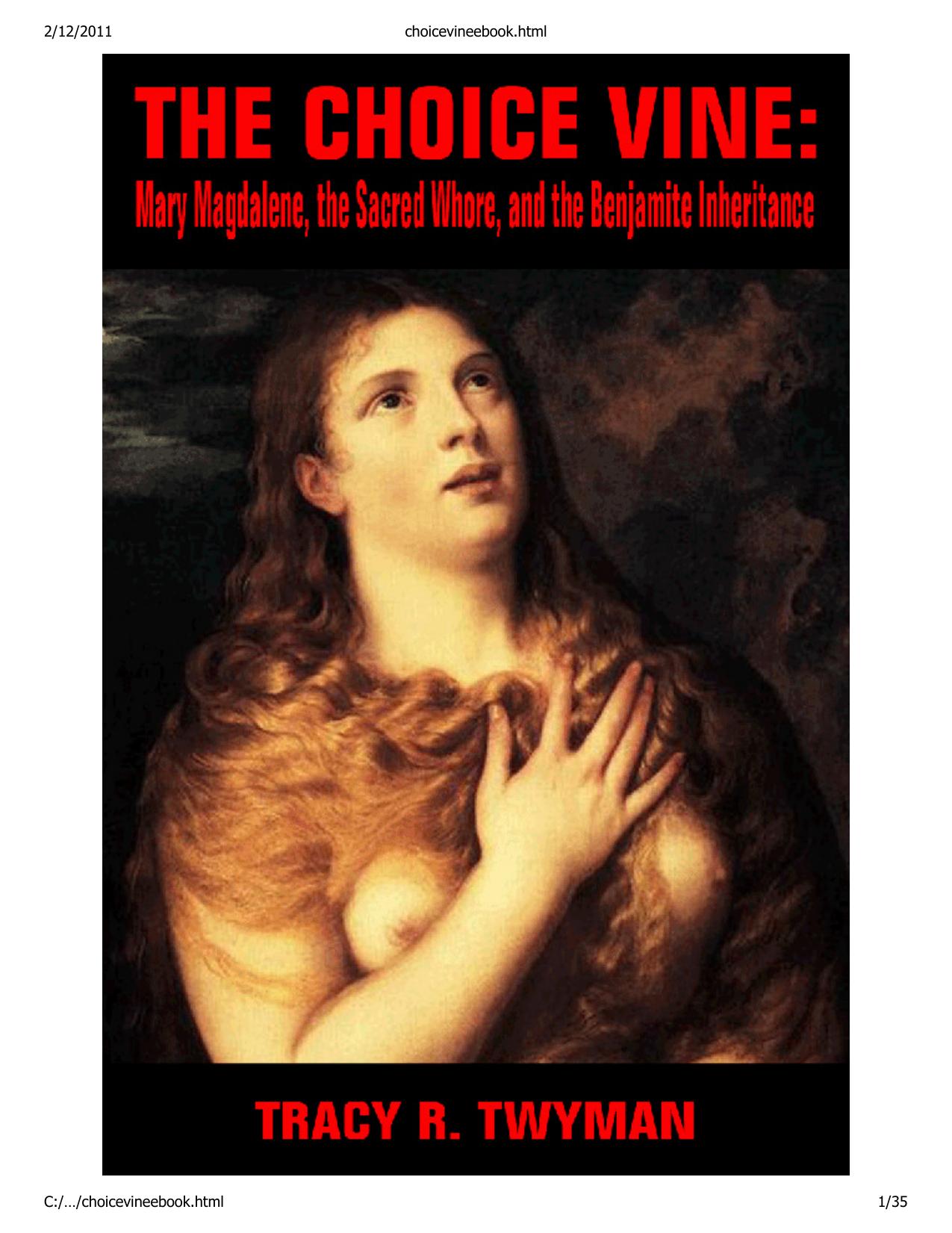The Choice Vine: Mary Magdalene, the Sacred Whore, and the Benjamite Inheritance by Tracy R. Twyman

Author:Tracy R. Twyman [Twyman, Tracy R.]
Language: eng
Format: epub, pdf
Publisher: Quintessential Publications
Published: 2011-02-03T05:00:00+00:00
The Holy Whores of Israel
It is clear from reading the Old Testament that in the eyes of the Hebrew God, the only thing worse than worshipping the gods of other, non-Israelite tribes is marrying the daughters of non-Israelite tribes. The Hebrews believed quite literally that the curses and blessings of their god Yahweh had the power to be passed on intergenerationally through patrilineal descent. They believed that a special covenant had been made between their ancestor, Abraham, and the Hebrew god which conferred an exalted status upon their people - a covenant that was confirmed later by Isaac and Jacob as well. This covenant had been sealed by the rite of circumcision, starting with Abraham, which Abraham's children, and all servants of Yahweh thereafter undertook. It was only by passing through this ordeal that a person not already of Abraham's bloodline could enter into the covenant, and then the blessings of Yahweh would be passed down through their bloodline as well. Thus could an unclean man be made clean.
But there was no such rite to bring unclean women into the covenant. Therefore, women born of uncircumcised men from non-Israelite tribes were considered unfit for marriage, because they were thought to carry within their very blood an allegiance to other gods. It is for this reason that only those born of Jewish women are themselves considered Jews. According to rabbinical tradition, this law is derived from Deuteronomy 7:4, forbidding the taking of non-Israelite wives, "For they will turn thy son away from following me, that they may serve other gods." Thus most marriages to foreign wives were considered illegitimate.
The children born of such marriages were thought to carry within their blood the curse of Yahweh. However, the belief in generational curses and blessings was not something unique to the Hebrews. Many elements of their early culture, including many aspects of their religion, were borrowed from the Canaanites, cousins of the Hebrew people. The Hebrews had taken part of Canaan (after many years of genocidal tribal wars) when Yahweh had directed them to seize this land. The concept that one could establish a family covenant with a deity, the blessings of which would be passed down to oneââ¬â¢s descendants, was among the elements that the Israelites picked up from their cousins.
The Bible describes the land of Canaan as being inhabited mostly by Rephaim, the offspring of the Nephilim that the Bible refers to as "giants." If the Canaanites were giants, and they were also cousins of the Hebrews, that implies that the early Hebrews were also giants, and of Nephilim descent as well. Such a proposition is bourn out by numerous Jewish legends stating that all of the Biblical patriarchs up to and including the twelve sons of Jacob were giants. It appears that the pantheon of deities that were worshipped by the Canaanites, and by other Middle Eastern tribes, in fact represented ancestral gods - the angels, or Nephilim, who helped spawn their races in antediluvian times. And among this pantheon
Download
The Choice Vine: Mary Magdalene, the Sacred Whore, and the Benjamite Inheritance by Tracy R. Twyman.pdf
This site does not store any files on its server. We only index and link to content provided by other sites. Please contact the content providers to delete copyright contents if any and email us, we'll remove relevant links or contents immediately.
The Lost Art of Listening by Michael P. Nichols(7165)
Why I Am Not A Calvinist by Dr. Peter S. Ruckman(4047)
The Rosicrucians by Christopher McIntosh(3373)
Wicca: a guide for the solitary practitioner by Scott Cunningham(3044)
Signature in the Cell: DNA and the Evidence for Intelligent Design by Stephen C. Meyer(2879)
Real Sex by Lauren F. Winner(2867)
The Holy Spirit by Billy Graham(2777)
To Light a Sacred Flame by Silver RavenWolf(2678)
The End of Faith by Sam Harris(2636)
The Gnostic Gospels by Pagels Elaine(2399)
Waking Up by Sam Harris(2331)
Nine Parts of Desire by Geraldine Brooks(2281)
Jesus by Paul Johnson(2229)
Devil, The by Almond Philip C(2205)
The God delusion by Richard Dawkins(2190)
Heavens on Earth by Michael Shermer(2189)
Kundalini by Gopi Krishna(2093)
Chosen by God by R. C. Sproul(2055)
The Nature of Consciousness by Rupert Spira(1982)
